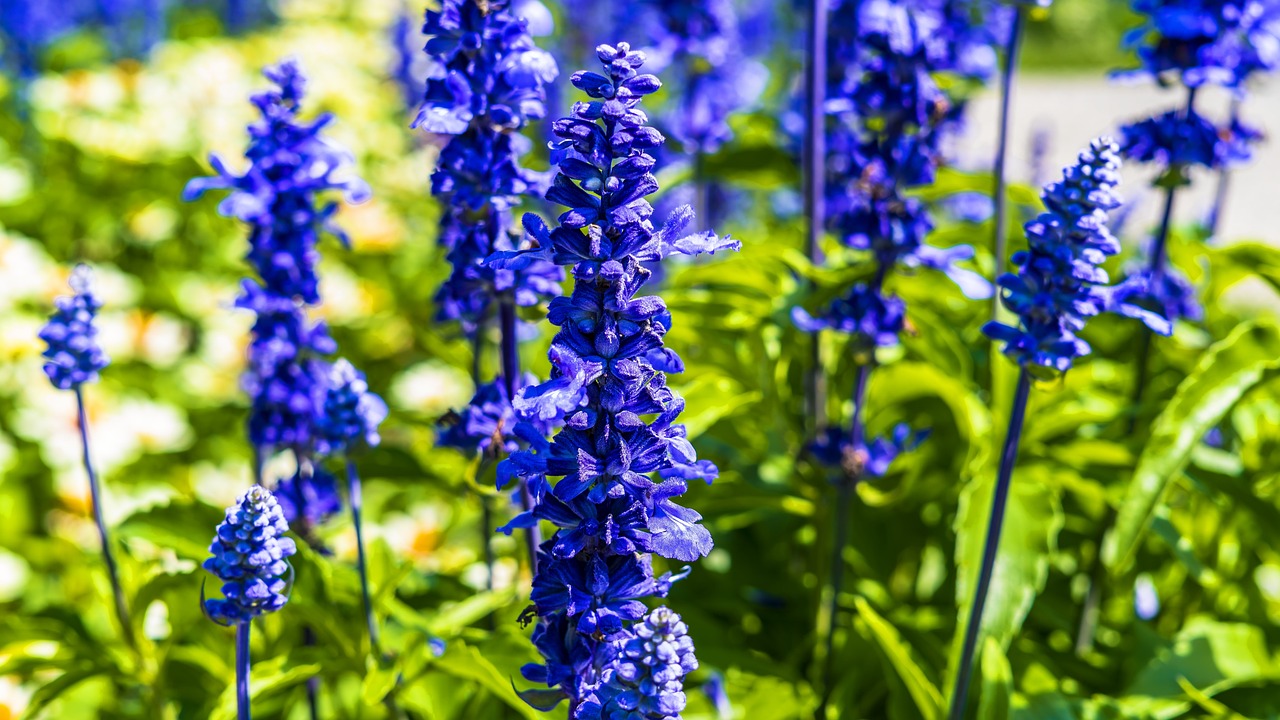
Larkspurs, with their delicate blooms in shades of purple, blue, and white, are a charming addition to any flower garden. However, these beauties can be surprisingly fussy for new gardeners. Don’t be discouraged! By understanding some common larkspur growing mistakes, you can transform your garden bed from a frilly fiasco into a flourishing field of these captivating flowers.
This post may have affiliate links. This means that sometimes when you click a link on our site and make a purchase on Amazon, we may earn a small commission at no additional cost to you. We only recommend products we truly believe in, and your support helps keep us running!
Sunlight Savvy: Finding the Larkspur Sweet Spot
Larkspurs are sun-worshippers, but not the kind who crave a scorching desert. They thrive in full sun for at least 6-8 hours a day. However, in very hot climates, some afternoon shade can be beneficial to prevent scorching of the leaves.
Mistake #1: Not Enough Sun
Planting your larkspurs in a shady corner might seem like a good idea, but it will leave them leggy and struggling to bloom. Look for a location in your garden that receives ample sunlight throughout the day.
Mistake #2: Overdoing the Sun
While larkspurs appreciate sunlight, they’re not fans of extreme heat. In very hot climates, consider planting them near taller plants that can provide some dappled shade during the afternoon’s peak heat.
Soil Secrets: The Foundation for Fantastic Larkspurs
Larkspurs prefer well-draining, fertile soil. Amending your soil before planting is crucial for their success.
Mistake #3: Ignoring Soil Drainage
Heavy, clay soil can suffocate larkspur roots. Before planting, incorporate organic matter like compost or aged manure to improve drainage and soil fertility. Raised beds are a great option for ensuring proper drainage, particularly in areas with heavy clay soil.
Mistake #4: Forgetting the Fertilizer
Larkspurs benefit from a light feeding during the growing season. Use a balanced fertilizer formulated for flowering plants according to the package instructions. Avoid over-fertilizing, as this can promote excessive foliage growth at the expense of blooms.
Planting Pointers: Setting Your Larkspurs Up for Success
Planting larkspurs at the right time and depth is essential for their health and vigor.
Mistake #5: Planting Too Early
Larkspurs are cool-season plants and dislike hot temperatures. Wait until the danger of frost has passed in your area before planting seeds or seedlings outdoors. Ideally, aim for planting when soil temperatures reach around 50°F (10°C).
Mistake #6: Planting Too Deeply
Larkspurs are shallow rooters. Planting seeds or seedlings too deep can hinder their growth. Sow seeds ¼ inch deep and cover lightly with soil. When planting seedlings, ensure the crown (the point where the stem meets the roots) sits at soil level.
Watering Wisdom: Keeping Your Larkspurs Hydrated
Larkspurs need consistent moisture, but not soggy feet. Finding the right watering balance is key.
Mistake #7: Underwatering
Larkspurs will wilt dramatically if they dry out completely. Water deeply and regularly, especially during hot and dry periods. Aim to keep the soil consistently moist, but not waterlogged.
Mistake #8: Overwatering
Soggy soil can lead to root rot, a deadly disease for larkspurs. Allow the top inch of soil to dry slightly between waterings. Mulching around your larkspurs helps retain moisture and prevent the soil from drying out too quickly.
Spacing Strategies: Giving Your Larkspurs Room to Bloom
Proper spacing is crucial for air circulation, preventing disease, and allowing your larkspurs to reach their full potential.
Mistake #9: Crowding Your Larkspurs
Seeds or seedlings planted too close together will compete for resources and struggle to grow. Refer to the spacing recommendations on the seed packet or plant label. Larkspurs typically need 12-18 inches of space between plants.
Mistake #10: Forgetting to Deadhead
Deadheading, or removing spent blooms, encourages continued flowering throughout the season. Regularly pinch off wilted flowers to prevent seed formation and keep your larkspurs producing beautiful blooms.
Conclusion: From Frustration to Flourishing
By avoiding these common mistakes and following these simple tips, you can ensure your larkspurs thrive and grace your garden with their captivating blooms. Remember, gardening is a journey of learning and experimentation. Don’t be afraid to get your hands dirty, observe your plants, and adjust your approach as needed. With a little care and attention, your larkspurs will reward you with a stunning display of color throughout the season.
